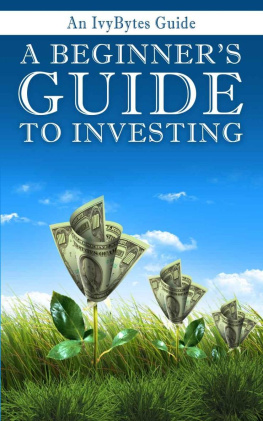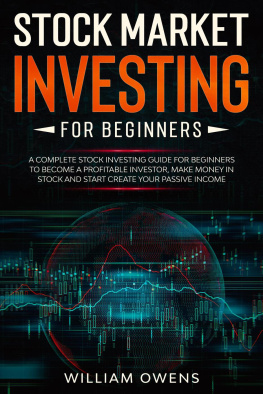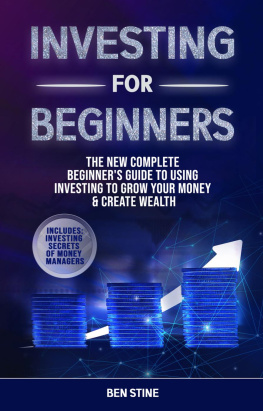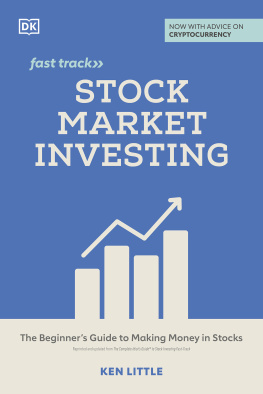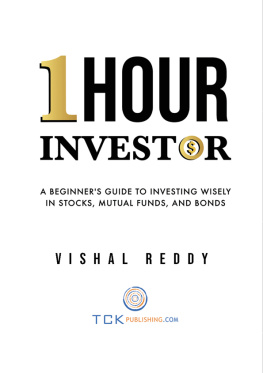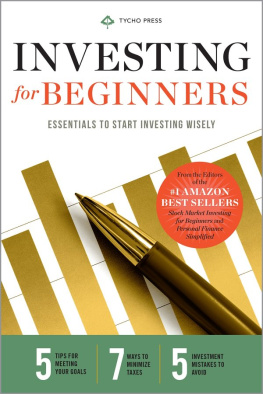Accompanying Email Course (Free)
In an effort to take the book beyond the page, we have created a multi-part email class that extends the ideas in this book. You will receive a digestible email lesson every week or so. We hope it will be a great way to reinforce the concepts here in a different format and frequency.
Sign up for free at try.ivyvest.com/rational (if you are using a standard kindle you may want to do this from your computer). And don't worry, we have much better things to do with our time than share your email address with spammers.
Sign Up here: http://try.ivyvest.com/rational
Copyright 2013 Ivy Publications LLC.
All rights reserved. No part of this publication may be reproduced, distributed, or transmitted in any form or by any means, including photocopying, recording, or other electronic or mechanical methods, without the prior written permission of the publisher, except in the case of brief quotations embodied in critical reviews and certain other noncommercial uses permitted by copyright law. For permission requests, write to the publisher at .
No patent liability is assumed with respect to the use of the information contained herein. Although every precaution has been taken in the preparation of this publication, the publisher and author assume no responsibility for errors or omissions. Neither is any liability assumed for damages resulting from the use of information contained herein.
The material contained herein is not investment advice. Individuals should carefully research their own investment decisions and seek the advice of a Registered Investment Advisor where appropriate.

www.ivybytes.com
Table of Contents
Preface
Investing is a topic that can be as broad, as deep, and as complicated as you want it to be. And at various times in my investing career, I have reveled in those complexities, whether it was figuring out how to measure the risk of a portfolio of credit-default swaps, or assessing the impact of rising meat consumption in China on an Australian chemicals company.
But somewhat paradoxically, investing is also a field that can be as simple as you want it to be. There are less than a handful of principles that, if mastered, get you 95+% of the way to an optimal portfolio: stay diversified, keep expenses low, have a plan, save and invest early and often. If you can internalize these principles, it is certainly possible to spend as little as four or five hours a year on your investments.
But here's the real rub: That simple approach often outperforms the more complicated approach. The vast majority of individual investors actually actively harm themselves trying to pick investments that they think are going to make them rich, when a more passive but rational strategy that adhered to the core principles would perform much better. Investing is one field where, once you learn the basics, a little bit of laziness can actually be rewarded.
The goal of this book is to show you how simple investing can be, and to give you enough of a peek of some more advanced topics that you can go on later to make it as simple or complicated as you desire.
Alex Frey
alex@ivybytes.com
March 2013
Introduction
This short introduction will go over some important features of this book, including .
How to Get the Most Value Out of This Book
The Ivy Bytes series of books is designed to get you up to speed on a topic faster than anything else on the market.
- Every chapter begins with an overview of the material to be discussed.
- If you want to dive further into a topic, you can click the in-text links on your e-reader, tablet, or smart phone.TIP: If you are using a newer generation Kindle Touch, web articles can bebest viewed by clicking Mode and selecting Article Mode. You may have to connect to WiFi to enable an Internet connection. If you are using a tablet or smart phone, such as the Kindle Fire, iPad, iPhone, or Android, you can click links directly to open the page in your web browser.
- If you are reading the paper verison of this book, or using an older generation kindle, we arranged a list of the links for you at www.ivyvest.com/book-resources. You can go there from your computer to get them all in one place.
- Especially important information is presented in boldface to draw your attention to it.
- The Further Reading section at the end of each chapter contains a list of the very best outside material on a subject, and is a great starting point for digging further. Where possible, these lists include clickable links to the material.
How This Guide Was Made
The process for creating Ivy Bytes guides is simple:
- The guides' authors have an extensive background in their subject. Then they dig through countless newspaper and journal articles to get even more up to date on the latest thinking.
- They analyze this trove of information and pick out the most pertinent, important, and well-supported pieces-the material that everyone fluent in a topic should understand.
- They synthesize this material into an appropriate length of easily digestible content and include links to the "best of the rest."
A Note About the Products Included in This Book
Investing is a subject that has an extremely practical and actionable aspect to it, unlike, say, the history of 13th century France (which also might be very interesting, but is generally not something most people need to practice in their actual lives). This book was written to be as practical and actionable as possible, and in several places it made sense to mention the names and even ticker symbols of products that could be used to follow the strategies discussed.
Neither the author, nor the publisher, nor anyone involved in this book has a financial stake in any financial product mentioned in the book. Nor does anyone receive any kind of compensation from any of the products or companies mentioned. Many of the suggested products are from Vanguard, which is a customer-owned financial institution similar to a credit union.
Chapter 1
How to Double Your Money Every Seven Years:
The Parable of Jill and Average Joe
Overview
A small initial investment can increase to a surprisingly large amount if it is held over several decades thanks to an for vast wealth creation both because they start saving too late in their career and because they fail to achieve even an average rate of return due to fees and investment mistakes. The epidemic of financial illiteracy that underlies both of these mistakes can cost the average investor more than $500,000 over the course of a lifetime.
The Parable of Jill and Average Joe
Jill and "Average Joe" are similar in many aspects:
- Each goes to a four-year college and graduates at age 22.
- Each enters the workforce making $40,000 a year.
- Each retires at 65 and lives the next 20 years off of accumulated savings.
- Each goes through the typical ups and downs that impact finances-things like unexpected job loss, marriage, and having one more kid than the "five year plan" called for.
Through it all, Jill and Average Joe both manage to make saving money a priority. Over the long-term each manages to put an average of 10% of total income into a retirement fund, only taking a break for three years in their mid-30s when family expenses and job concerns made saving too much of a sacrifice.

